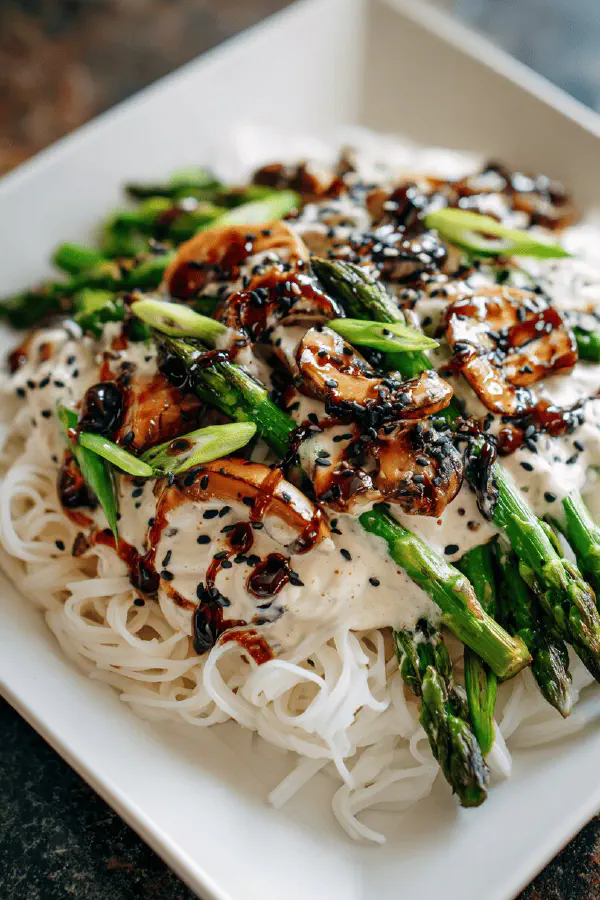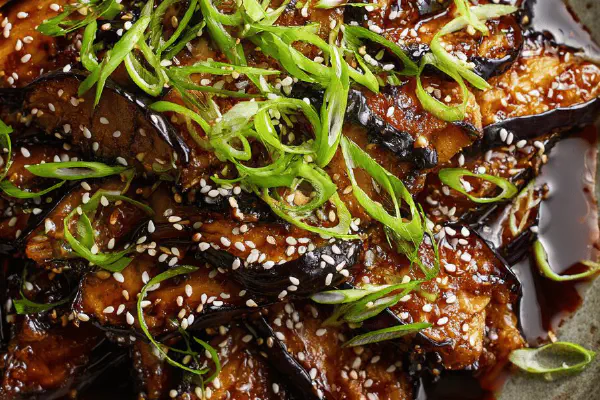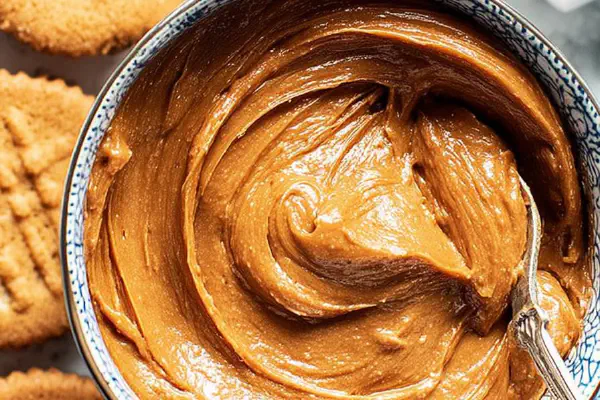Featured Recipe
Toasted Sesame Sauce Remix

By Kate
"
Quick sauce blending creamy base with toasted sesame notes, brightened by rice vinegar, with a subtle umami twist from tamari and tamarind paste. Balanced acidity and nuttiness. Slightly thicker texture—good for drizzling or dipping. Takes about 6 minutes start to finish. Adaptable: works with vegan mayo or yogurt, not just classic mayo. Use toasted white or black sesame oil sparingly—too much overwhelms. Easy to tweak salt level depending on soy alternative. Great on cold noodles, grilled veggies or as sandwich spread.
"
Prep:
6 min
Cook:
0 min
Total:
6 min
Serves:
150 ml (2/3 cup)
sauces
Asian cuisine
quick recipes
Introduction
Sesame sauce—simple yet tricky. Too much oil turns bitter; not enough, it’s flat. Mayonnaise or yogurt anchors the texture, holding everything together. Acid brightens, lifts the fat, stops it from going heavy. Tamarind paste gives a subtle fruity tartness; you won’t find this in a basic sesame mayo blend but it cuts richness beautifully. With fast prep—whisk and done in minutes. No cooking needed, just measured mixing. In a rush? Use store-bought mayo but beware of extra sugar throwing off balance. Toasted sesame oil: it’s gold, use as a flavor accent. Overdo and bitterness screams. Mirin softens, rounds acidity with subtle sweetness instead of sugar loads. Tweak vinegar to taste—faster ripened or mellow depending on brand. Watch for separation after refrigeration—whisk to restore emulsion. A sauce you can riff on, substitute, and keep handy.
Ingredients
About the ingredients
Mayonnaise base recommended for binding and creamy texture. Vegan mayo or Greek yogurt acceptable—Greek yogurt makes it tangier, less fatty, but thinner. Rice vinegar preferred for mild acidity without sharpness. Apple cider works but flavor shifts. Mirin: Japanese sweet rice wine—balances acidity. No mirin? Substitute with dry sherry with less sugar or a teaspoon honey plus a splash water. Toasted sesame oil: potent, small amounts essential. Fresh toasted oil far superior to old, rancid oil—smell before use. Soy sauce: tamari preferred gluten-free option, deeper flavor, less sharp. Regular soy sauce fine if gluten not a concern, reduce quantity slightly to manage salt. Tamarind paste adds a unique sour layer. No paste? Squeeze lime juice (less viscous so add carefully) or pomegranate molasses for complexity. Adjust consistency with water or extra vinegar—goal is pourable, not watery.
Method
Technique Tips
Start with creamy base. Whisk in acid slowly, observing texture changes. The slight separation or oil sheen indicates when you’ve activated flavor layers. Add sweetener next to round off sharp edges of vinegar. Sesame oil last to control bitterness. Tamarind paste last for best incorporation without clumps. Whisk vigorously to blend, creating a shiny, smooth emulsion. If sauce tastes too thick or clumpy, thin with minute amounts of water or additional vinegar, mixing carefully. Avoid overwhisking which can thin sauce too much or break emulsion. Refrigerate if not used immediately—will thicken and flavor will intensify. Always stir before serving; oil may separate on top. Use immediately after mixing for freshest aroma and bright flavors. Perfect cold; heat ruins sesame oil fragrance. Practical tip: measure accurately—not eyeball oil; bitterness sneaks in fast if overpoured. Also, avoid metal utensils affecting tamarind flavor—wooden or plastic preferred.
Chef's Notes
- 💡 Measure mayonnaise carefully; too much sesame oil can bring bitterness. Follow steps in order, adds texture. Watch for oily sheen.
- 💡 Vinegar: add slowly. Note changes in texture. Look for glossy finish—it’s key. Balance acidity with sweetness from mirin.
- 💡 Have backup options ready; dry sherry can replace mirin. Apple cider vinegar can work but test flavor carefully. Adjust salt levels.
- 💡 If too thick, don’t panic. Use water or more vinegar, add gradually. Each ingredient’s quality matters—old sesame oil? Toss it.
- 💡 Need extra tang? Lime juice or pomegranate molasses can be a backup for tamarind. Small amounts, too much overwhelms flavors.
Kitchen Wisdom
How to fix a broken sauce?
Emulsion might separate. Whisk gently. Not too fast. Try adding a drop of water slowly. Reset texture.
What if it tastes off?
Balance flavors. Too salty? Add more vinegar. Sweetness? Adjust with mirin. Always taste as you go.
Can I store leftover sauce?
Yes, airtight container up to 3 days. Aroma develops but keep an eye on separation. Stir before using.
How to adjust thickness?
Thin with water or vinegar incrementally. Aim for pourable but not watery. Creamy base crucial.



